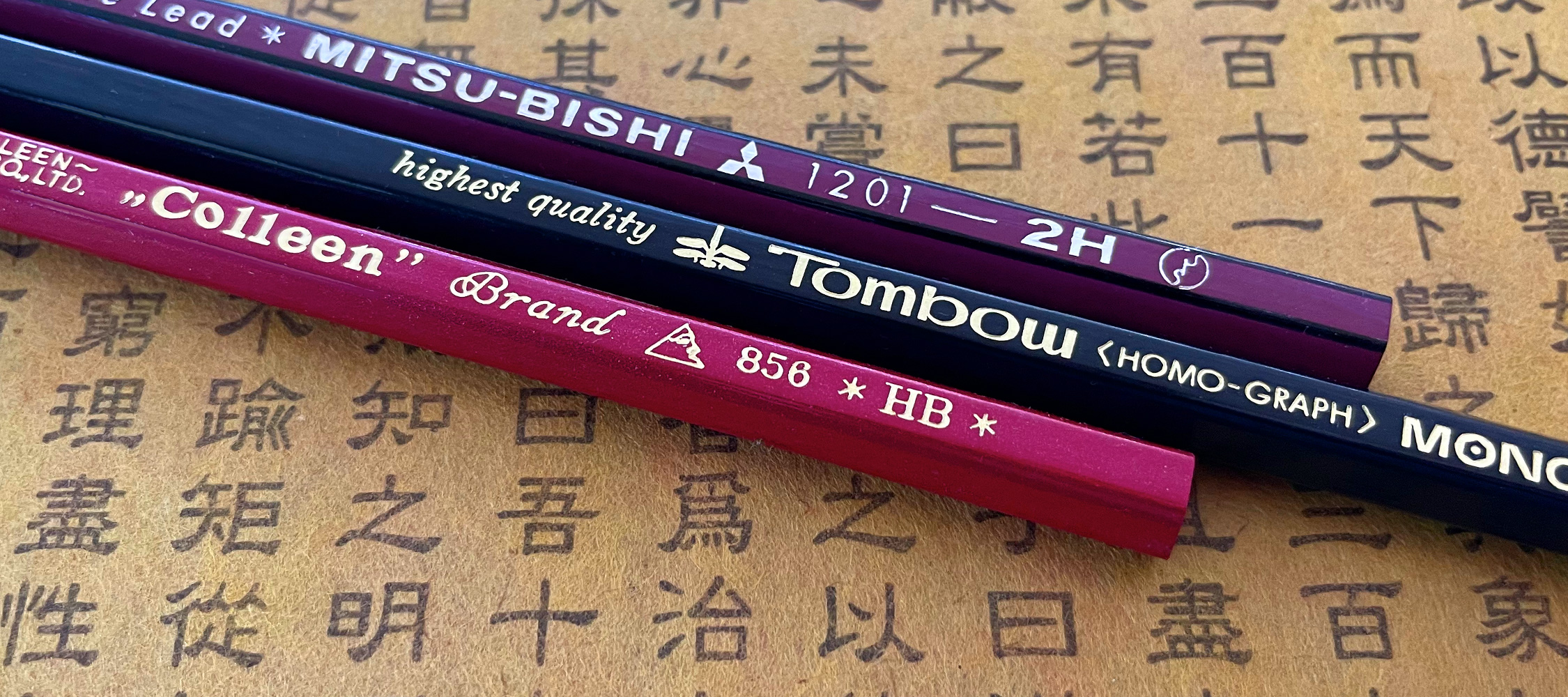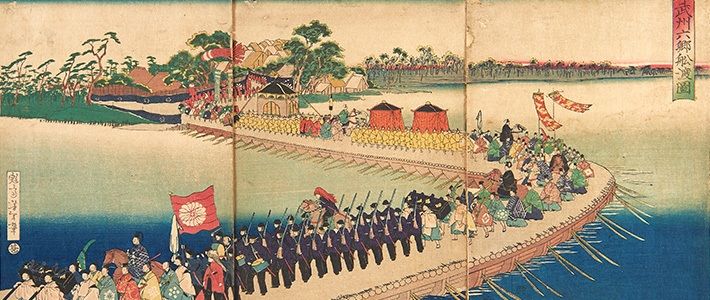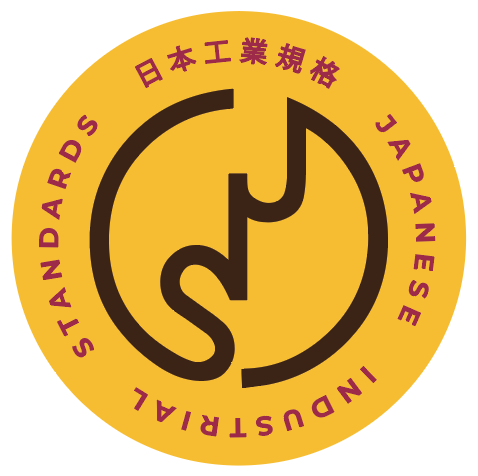
A Beginner’s Guide to Japanese Pencils
日本の鉛筆が大好き!(I love Japanese pencils!)
Japanese stationery is loved across the globe, and Japanese pencils are no exception. What better way to celebrate Japanese Pencil Month than to dive into the rich history of these vintage pencils, and what makes them special?
A Brief History of Japanese Pencils
Rumor has it that the oldest pencil was offered as a gift to Tokugawa leyasu, the founder and first shōgun of the Tokugawa shogunate of Japan. This famous ruler brought an end to a long period of civil wars throughout Japan, and his shōgun ruled Japan from 1603 until 1868.
It wasn’t until after the Meiji Restoration in 1868 that Japan began adopting western culture and technology. Japanese pencil production began near the end of the Tokugawa reign, when the first factory was established in 1877 (also known as Meiji 10).

10 years later, in 1887 (Meiji 20), Niroku Masaki established the “Masaki Pencil Manufacturing Company.” Then about 40 years later it was renamed the Mitsubishi Pencil Co. (no relation whatsoever to the other Mitsubishi), and has remained one of the top pencil manufacturers in Japan to this day. This month I’m featuring a colorful Mitsubishi Vermilion / Prussian Blue pencil, which contains red graphite on one end and blue on the other.

In 1913 (Taisho 2) the Harunosuke Ogawa Shoten factory was established. This company focused specifically on manufacturing pencils for an economy that placed a new emphasis on education. Then in 1927 (Showa 2), Harunosuke Ogawa Shoten became known as Tombow, meaning “dragonfly” in Japanese. A trademark stamp of “Highest Quality” has become synonymous with Tombow Pencil Company’s brand, which is printed on all of Tombow’s drawing pencils.
If you’d like to experience the quality of these pencils for yourself, check out the vintage Tombow Mono 100 5B with its old-school JIS symbol. Here’s a photo showing a cool old plastic box with a dozen pencils inside:

At the same time the original Tombow factory was being established, another pencil company by the name of Kita Boshi was born. This family-owned business became known for its founder’s statement, “A pencil sacrifices itself to serve people. Both humans and pencils need cores.”



A few years later, in 1916 (Taisho 5), Colleen Pencil Co. was established. For eighty years they sold quality pencils like the Colleen 710 HB, and the company was considered one of Japan’s Big Three pencil manufacturers (alongside Mitsubishi and Tombow). While Colleen sadly sold its assets in 1997, it was later revived in Thailand with a new focus on the Thai and international markets.
There are many other pencil companies that have been established over the years, but these few mentioned here demonstrate the fact that Japan truly has a rich pencil history.
What Makes Japanese Pencils Special?
Pencils are (and have long been) a big deal in Japan!
One of the reasons has to do with the exceptional quality of Japanese graphite as well as the country’s highly-respected manufacturing processes. Interestingly enough, even some American companies such as Palomino (makers of the modern era Blackwings) outsource final assembly to Nippon. There is something truly special about pencils made in Japan.
Another aspect that contributes to the desirability of Japanese pencils is the attention given to detail and design. As you can easily tell from my personal collection they come in seemingly endless color and style variations. Mitsubishi and Kita Boshi are both well-known for offering unique and innovative designs — perfect for those searching for colorful, creative, and kawaii-style pencils.
A Word About Vintage

If you get the chance to look at a vintage Japanese pencil closely, you may notice a little squiggly symbol in a circle imprinted into the side of the pencil. These squiggly lines are the “JIS” (Japanese Industry Standard) mark found on all wood-cased pencils manufactured between 1946 and 2008. This signifies that the pencil meets the standards for industrial activities in Japan. The committee concerned with enforcing these standards was established one year after Japan’s defeat in World War II.
If you ever come across a pre-WWII Japanese pencil, it won’t have this symbol on it. And, pencils made after 2008 will display a different symbol design.
Collecting Vintage Japanese Pencils
What’s not to love about vintage JIS pencils? Not only are they top-notch quality, they are also some of the most beautiful pencils out there. Plus, as noted above, they’ve got some pretty interesting history behind them, too.

One of the very first Japanese pencils I got my hands on was this pre-WWII Top Brand, pictured above. Because it wasn’t produced by one of the Big Three brands, it was a very exciting and mysterious find for me. And although it isn’t JIS certified, it is definitely a keeper.
Maybe you will experience a similar thrill when you buy your very first vintage Japanese pencil. Or maybe you’re looking to enhance your collection with some new and interesting specimens. Either way, I’ve got you covered with dozens of vintage Japanese pencils for sale. Plus, don’t miss out on my new collection of stickers to celebrate Japanese pencil month!